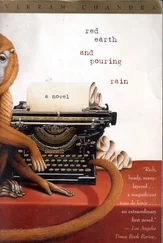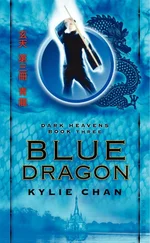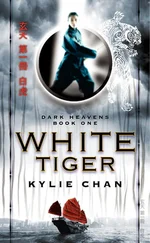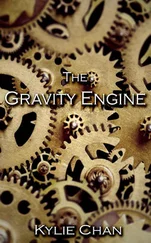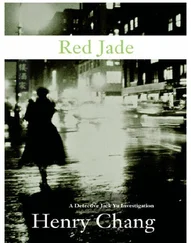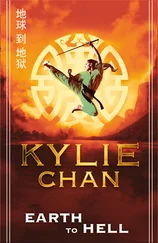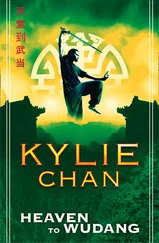‘Because I am what I am,’ he said, his voice rumbling through his chest.
Simone didn’t move or reply.
‘Are you two okay?’ he said softly. ‘You should be sleeping.’
Simone turned her face away from me, still leaning on his chest.
‘You know that Emma loves you,’ John said.
Simone turned her face back to me and smiled. She reached out and touched my cheek. ‘I know. I think she loves me more than she loves you, Daddy.’
‘She would never hurt you,’ he said.
‘I know that,’ she said. ‘But why is she a snake?’
‘Nobody knows,’ he said. ‘It might be because I’m a snake too.’
Simone was silent. Then she pulled herself upright, her little arms around his neck, and smiled into his face. ‘We’ll all be just fine, you know that?’
He wrapped his arm around her and squeezed both of us. ‘Yes, we will.’
Simone dropped her head back onto his chest and sighed. ‘We’re all going to be just fine.’
The Serpent woke.
It raised its head from the silky
soft mud, then slithered forward,
leaving an elegant trail.
It threw itself up into the
freezing black water and whipped
towards the surface.
It cried. There was no answer.
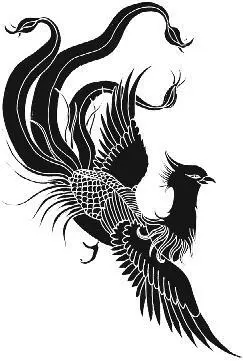
A NOTE ON LANGUAGE
The Chinese language is divided by a number of different dialects and this has been reflected throughout my story. The main dialect spoken in Hong Kong is Cantonese, and many of the terms I’ve used are in Cantonese. The main method for transcribing Cantonese into English is the Yale system, which I have hardly used at all in this book, preferring to use a simpler phonetic method for spelling the Cantonese. Apologies to purists, but I’ve chosen ease of readability over phonetic correctness.
The dialect mainly spoken on the Mainland of China is Putonghua (also called Mandarin Chinese), which was originally the dialect used in the north of China but has spread to become the standard tongue. Putonghua has a strict and useful set of transcription rules called pinyin, which I’ve used throughout for Putonghua terms. As a rough guide to pronunciation, the ‘Q’ in pinyin is pronounced ‘ch’, the ‘X’ is ‘sh’ and the ‘Zh’ is a softer ‘ch’ than the ‘Q’ sound. Xuan Wu is therefore pronounced ‘Shwan Wu’.
I’ve spelt chi with the ‘ch’ throughout the book, even though in pinyin it is qi, purely to aid in readability. Qing Long and Zhu Que I have spelt in pinyin to assist anybody who’d like to look into these interesting deities further.
Aberdeen Typhoon Shelter: A harbour on the south side of Hong Kong Island that is home to a large number of small and large fishing boats. Some of the boats are permanently moored there and are residences.
Admiralty: The first station after the MTR train has come through the tunnel onto Hong Kong Island from Kowloon, and a major traffic interchange.
Ancestral tablet: A tablet inscribed with the name of the deceased, which is kept in a temple or at the residence of the person’s descendants and occasionally provided with incense and offerings to appease the spirit.
Anime(Japanese): Animation; can vary from cute children’s shows to violent horror stories for adults, and everything in between.
Bai Hu(Putonghua): The White Tiger of the West.
Bo: Weapon—staff.
Bo lei: A very dark and pungent Chinese tea, often drunk with yum cha to help digest the sometimes heavy and rich food served there.
Bu keqi(Putonghua) pronounced, roughly, ‘bu kerchi’: ‘You’re welcome.’
Buddhism: The system of beliefs that life is an endless journey through reincarnation until a state of perfect detachment or Nirvana is reached.
Cantonese: The dialect of Chinese spoken mainly in the south of China and used extensively in Hong Kong. Although in written form it is nearly identical to Putonghua, when spoken it is almost unintelligible to Putonghua speakers.
Causeway Bay: Large shopping and office district on Hong Kong Island. Most of the Island’s residents seem to head there on Sunday for shopping.
Central: The main business district in Hong Kong, on the waterfront on Hong Kong Island.
Central Committee: Main governing body of Mainland China.
Cha siu bow: Dim sum served at yum cha; a steamed bread bun containing barbecued pork and gravy in the centre.
Chek Lap Kok: Hong Kong’s new airport on a large swathe of reclaimed land north of Lantau Island.
Cheongsam(Cantonese): Traditional Chinese dress, with a mandarin collar, usually closed with toggles and loops, and with splits up the sides.
Cheung Chau: Small dumbbell-shaped island off the coast of Hong Kong Island, about an hour away by ferry.
Chi : Energy. The literal meaning is ‘gas’ or ‘breath’ but in martial arts terms it describes the energy (or breath) of life that exists in all living things.
Chi gong(Cantonese): Literally, ‘energy work’. A series of movements expressly designed for manipulation of chi.
Chinese New Year: The Chinese calendar is lunar, and New Year falls at a different time each Western calendar. Chinese New Year usually falls in either January or February.
Ching: A type of life energy, ching is the energy of sex and reproduction, the Essence of Life. Every person is born with a limited amount of ching and as this energy is drained they grow old and die.
Chiu Chow: A southeastern province of China.
Choy sum(Cantonese): A leafy green Chinese vegetable vaguely resembling English spinach.
City Hall: Hall on the waterfront in Central on Hong Kong Island containing theatres and a large restaurant.
Confucianism: A set of rules for social behaviour designed to ensure that all of society runs smoothly.
Congee: A gruel made by boiling rice with savoury ingredients such as pork or thousand-year egg. Usually eaten for breakfast but can be eaten as a meal or snack any time of the day.
Connaught Road: Main thoroughfare through the middle of Central District in Hong Kong, running parallel to the waterfront and with five lanes each side.
Cross-Harbour Tunnel: Tunnel that carries both cars and MTR trains from Hong Kong Island to Kowloon under the Harbour.
Cultural Revolution: A turbulent period of recent Chinese history (1966-75) during which gangs of young people called Red Guards overthrew ‘old ways of thinking’ and destroyed many ancient cultural icons.
Dai pai dong(Cantonese): Small open-air restaurant.
Dan tian: Energy centre, a source of energy within the body. The central dan tian is roughly located in the solar plexus.
Daujie(Cantonese): ‘Thank you’, used exclusively when a gift is given.
Dim sum(Cantonese): Small dumplings in bamboo steamers served at yum cha. Usually each dumpling is less than three centimetres across and four are found in each steamer. There are a number of different types, and standard types of dim sum are served at every yum cha.
Читать дальше
Конец ознакомительного отрывка
Купить книгу


